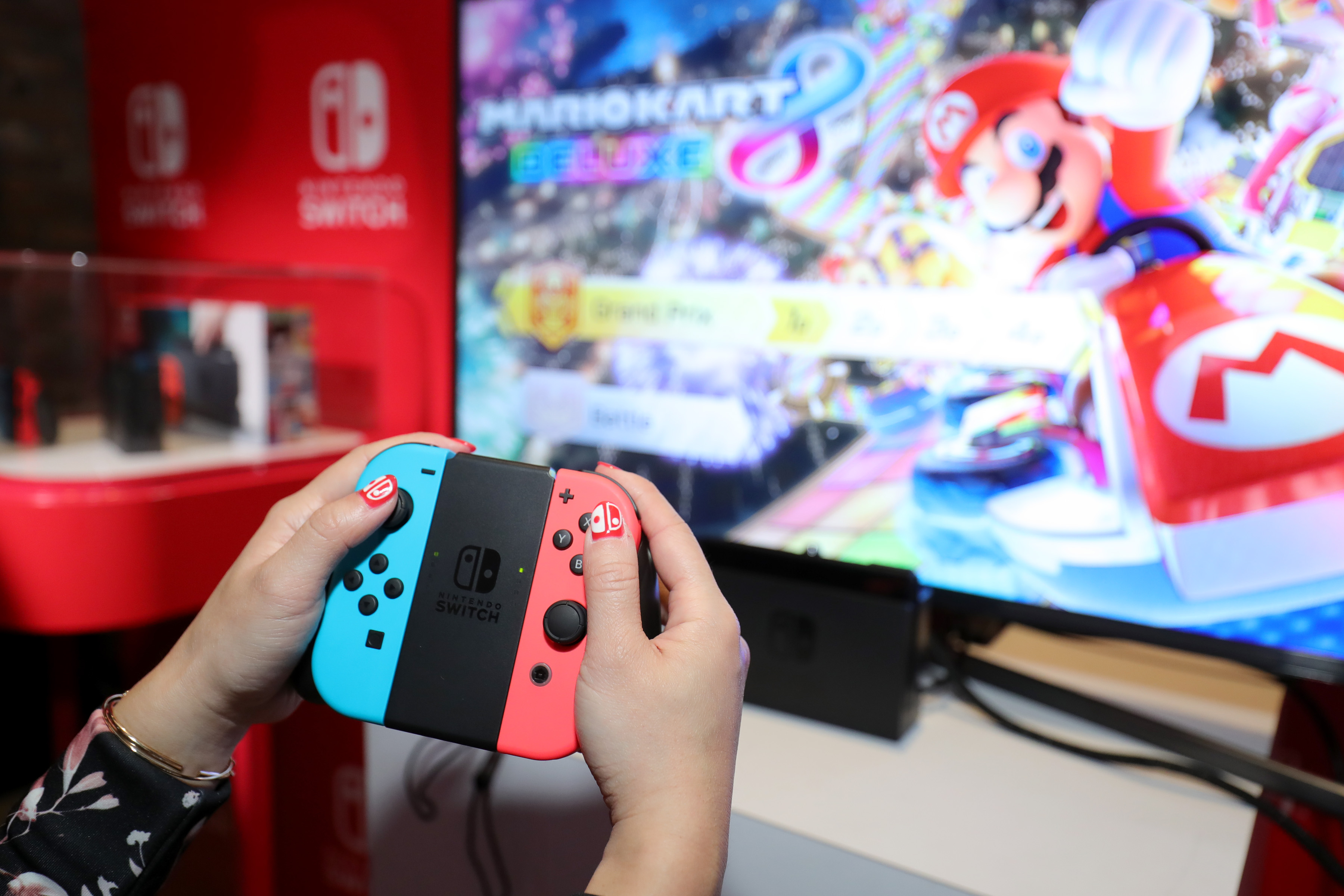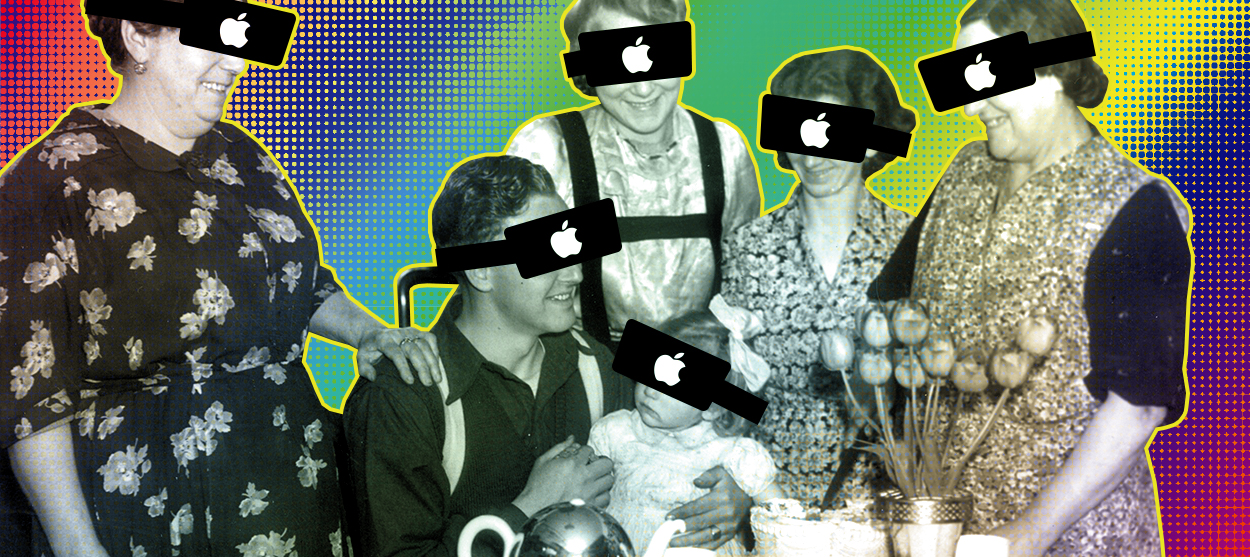The gaming console isn't dead yet. And the Nintendo Switch proves it.
How the Nintendo Switch has thrived in a smartphone-dominated world


The smartphone was supposed to usurp everything. And in a way, it has. The point-and-shoot camera market? Mostly gone. MP3 players? Even Apple has given up on the classics. And then there are the host of tiny gizmos and gadgets now replaced by our ubiquitous pocket computers — everything from mapbooks to alarm clocks to calculators.
As a result, conventional logic has been that tech that focused on just one thing was going to become obsolete, or be relegated to tiny, mostly irrelevant niches. But things haven't worked out that way. Consider this: The Nintendo Switch is now the fastest selling console in U.S. history. This is despite the fact that the smartphone was supposed to decimate mobile and console gaming.
The Switch's surprising success suggests that there still a place for single-purpose tech. And, paradoxically, to compete with the smartphone, you must do what smartphones cannot — all while acknowledging how have they changed things. The larger lesson, however, is that if you want to succeed in tech, you need to produce compelling experiences, not just compelling products.
The Week
Escape your echo chamber. Get the facts behind the news, plus analysis from multiple perspectives.

Sign up for The Week's Free Newsletters
From our morning news briefing to a weekly Good News Newsletter, get the best of The Week delivered directly to your inbox.
From our morning news briefing to a weekly Good News Newsletter, get the best of The Week delivered directly to your inbox.
The Switch's main appeal is that it works as both a home and mobile console, able to connect to TV to run at full power, or to be used as a mobile console with only slightly reduced performance. Most users do in fact use the console in both modes, and this goes a long way to explain its popularity.
While this multi-functionality is undoubtedly novel, it also says something about how the smartphone changed our connection between lifestyle and technology. With people living more mobile lives, the idea of being able to fit a bit of entertainment into one's lunch break or commute made smartphone games very appealing. The Switch allows for those standalone gaming bursts to merge with one's home gaming sessions. So instead of having to choose between hardcore, hour-long sessions played at home, and Angry Birds on the bus, the Switch lets a gamer form a more continuous experience.
It's a clever solution. Not only does it make Nintendo's console a mobile device, showcasing its superior controls and graphics against most smartphone games, it becomes a better cultural solution, too, giving people a reason to shell out a few extra hundred dollars.
The storied gaming company is well-positioned for such a philosophy, having pioneered both mobile and home gaming. It's a mix other companies — including Apple, which hasn't seen much traction with games on its Apple TV — have trouble replicating.
A free daily email with the biggest news stories of the day – and the best features from TheWeek.com
But it isn't the simultaneous home/mobile function alone that is so difficult to replicate; it's not impossible to imagine a dock for a smartphone and tablet from Samsung or Apple that enabled a Switch-like device. Rather, there is also a significant amount of intellectual property and talent to be found in Nintendo. In 2017, almost all "Game of the Year" lists included the Switch's Zelda and Mario titles, games that were not just popular but critically well-received, too. They are each the result of a decades-long process that has made these characters familiar, and has seen Nintendo's teams hone their design skills to make gaming nearer to art than craft.
Playing one of those games on the Switch, one can see how their various elements seamlessly work together to create an experience: The dedicated controls are unlike the touchscreen on a smartphone; the characters, worlds, and aesthetics are instantly recognizable; the game design is clever; and the marketing and support muscle back it all up.
This well-roundedness is at the root of the Switch's remarkable success. It has created an experience that cannot be replicated by Nintendo's tech and smartphone competitors. This isn't to say that Nintendo is alone in this realm. While Sony's Playstation 4 is less novel, it too has been wildly successful, topping 70 million units worldwide. Even Microsoft's Xbox One, which has been less successful, has still sold 30 million units — hardly a failure.
Dedicated gaming tech is thus far from dead. It is instead thriving, and there's one more big reason why: It offers something multifunction devices cannot yet: community. The Switch, for example, was designed from the ground up to be played in person with friends. Meanwhile, the Playstation and Xbox have thriving online communities, each replete with their own cultures and subcultures. Yes, what makes people continue to buy dedicated gaming tech is what it can do that the smartphone cannot; but more broadly, they are simply in search of particular experiences and quality.
So, despite the smartphone's seeming capacity to swallow everything, everyone from camera makers to photography outfits to gaming companies still have ways to expand their audiences beyond the smartphone, and find profitable niches. After all, despite the fact that core gaming is in fact a small slice of the tech world, it represents tens of millions of users. In focusing on dedicated tech for a dedicated audience, Nintendo's resurgence suggests there is still an enormous market at play.
Navneet Alang is a technology and culture writer based out of Toronto. His work has appeared in The Atlantic, New Republic, Globe and Mail, and Hazlitt.
-
 5 prize-winning cartoons about Donald Trump's appetite for awards
5 prize-winning cartoons about Donald Trump's appetite for awardsCartoons Artists take on operatic ambitions, peace prize pacifiers, and more
-
 Will Trump’s $12 billion bailout solve the farm crisis?
Will Trump’s $12 billion bailout solve the farm crisis?Today’s Big Question Agriculture sector says it wants trade, not aid
-
 ‘City leaders must recognize its residents as part of its lifeblood’
‘City leaders must recognize its residents as part of its lifeblood’Instant Opinion Opinion, comment and editorials of the day
-
 How do you solve a problem like Facebook?
How do you solve a problem like Facebook?The Explainer The social media giant is under intense scrutiny. But can it be reined in?
-
 Microsoft's big bid for Gen Z
Microsoft's big bid for Gen ZThe Explainer Why the software giant wants to buy TikTok
-
 Apple is about to start making laptops a lot more like phones
Apple is about to start making laptops a lot more like phonesThe Explainer A whole new era in the world of Mac
-
Why are calendar apps so awful?
The Explainer Honestly it's a wonder we manage to schedule anything at all
-
 Tesla's stock price has skyrocketed. Is there a catch?
Tesla's stock price has skyrocketed. Is there a catch?The Explainer The oddball story behind the electric car company's rapid turnaround
-
 How robocalls became America's most prevalent crime
How robocalls became America's most prevalent crimeThe Explainer Today, half of all phone calls are automated scams. Here's everything you need to know.
-
 Google's uncertain future
Google's uncertain futureThe Explainer As Larry Page and Sergey Brin officially step down, the company is at a crossroads
-
 Can Apple make VR mainstream?
Can Apple make VR mainstream?The Explainer What to think of the company's foray into augmented reality
